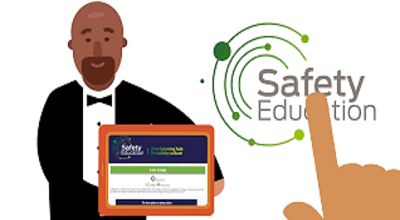Safety Education
Safety education is a critical component of ensuring a safe and healthy environment in various settings, including workplaces, schools, and communities. Effective safety education not only raises awareness about potential hazards but also equips individuals with the knowledge and skills to prevent accidents and respond appropriately in emergencies. Here are some key principles and management techniques for safety education:
1. Assessment of Risks and Hazards:
- Identify potential risks and hazards in the environment.
- Conduct regular risk assessments to stay updated on new or evolving risks.
- Prioritize risks based on severity and likelihood.
2. Customized Training Programs:
- Tailor safety education programs to the specific needs of the target audience.
- Consider the age, education level, and cultural background of the audience.
- Use a variety of formats (e.g., workshops, online modules, hands-on training) to accommodate different learning styles.
3. Clear Communication:
- Communicate safety guidelines, procedures, and expectations.
- Use plain language and avoid jargon to ensure understanding.
- Encourage open communication channels for reporting concerns or incidents.
4. Hands-on Training:
- Provide practical, hands-on training whenever possible.
- Simulate real-life scenarios to enhance preparedness.
- Include drills and exercises to reinforce learning.
5. Leadership Commitment:
- Demonstrate a strong commitment to safety from leadership.
- Allocate resources for safety training programs and initiatives.
- Integrate safety into organizational values and goals.
6. Continuous Improvement:
- Regularly review and update safety education materials.
- Seek feedback from participants to identify areas for improvement.
- Stay informed about new safety regulations and best practices.
7. Incentives and Recognition:
- Provide incentives for adherence to safety protocols.
- Recognize and reward individuals and teams for maintaining a safe environment.
- Create a positive safety culture where safety-conscious behavior is valued.
8. Emergency Response Planning:
- Develop and communicate emergency response plans.
- Conduct regular drills to ensure everyone is familiar with the procedures.
- Establish a chain of command and assign responsibilities during emergencies.
9. Technology Integration:
- Use technology for e-learning modules, virtual reality simulations, and other innovative training methods.
- Implement safety management systems and software to track and analyze safety data.
10. Compliance Monitoring:
- Regularly audit and monitor compliance with safety regulations.
- Address non-compliance promptly and implement corrective actions.
- Maintain records of safety training and incidents for documentation and analysis.
11. Community Engagement:
- Extend safety education efforts to the broader community.
- Collaborate with local authorities, schools, and organizations to promote safety awareness.
12. Crisis Communication:
- Develop a crisis communication plan to effectively communicate during emergencies.
- Train designated spokespersons on crisis communication best practices.
13. Legal Compliance:
- Stay informed about and comply with relevant safety laws and regulations.
- Conduct regular audits to ensure compliance and make adjustments as necessary.
14. Behavioral Safety Programs:
- Implement programs that focus on changing behaviors to improve safety.
- Encourage a proactive approach to identifying and addressing potential hazards.
15. Documentation and Reporting:
- Establish a systematic approach to documenting safety incidents and near-misses.
- Analyze incident data to identify patterns and areas for improvement.
By integrating these principles and management techniques, organizations and communities can create a robust safety education program that fosters a culture of awareness, preparedness, and continuous improvement.
